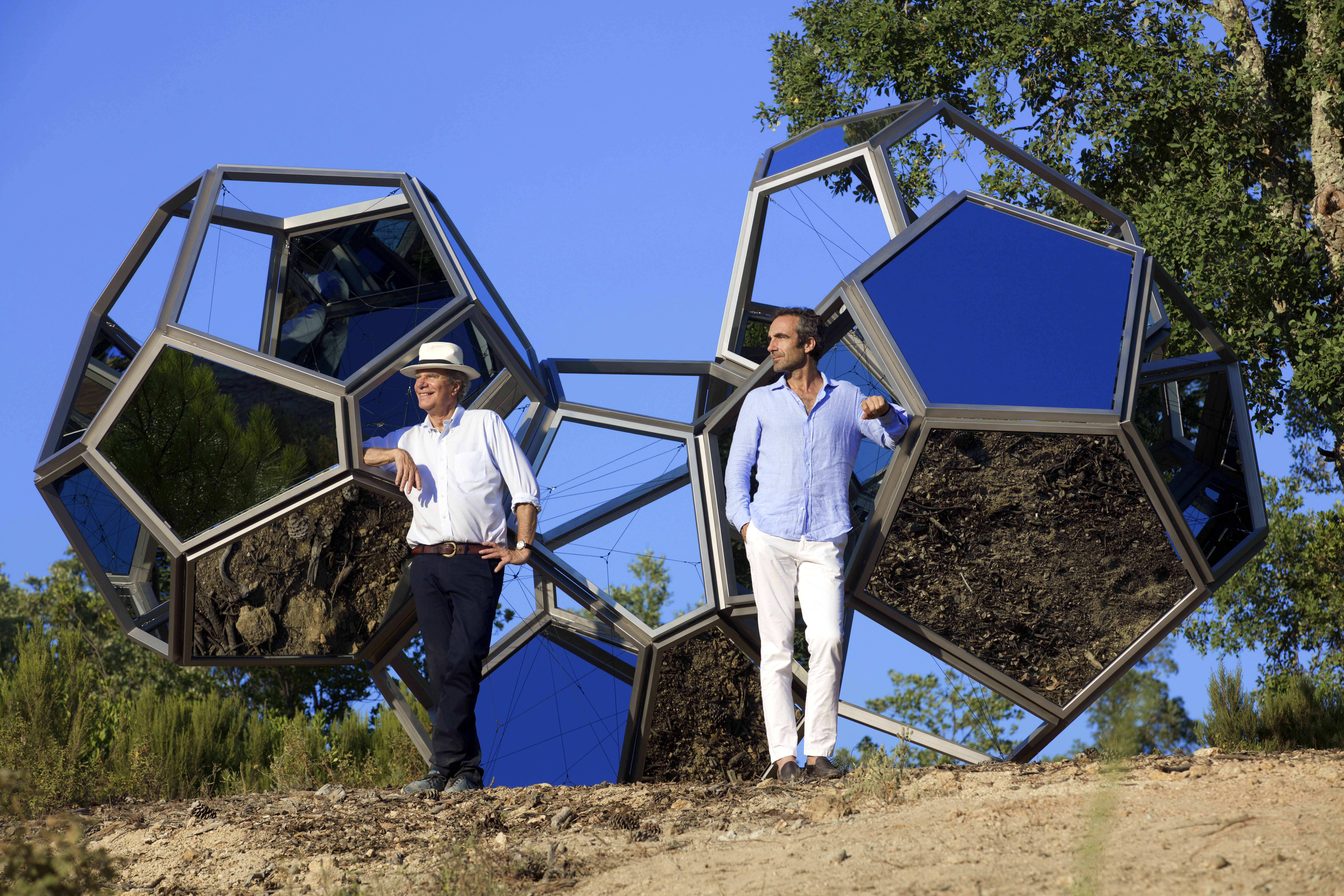
Veteran art dealer Jean-Gabriel Mitterrand has worked with contemporary artists for 30 years, but always dreamed of a sculpture park. Highlighting work from various artists and movements, the park, Domaine du Muy, is now found in a sprawling gated community near Nice and Saint-Tropez, amidst a slightly surreal mix of ordinary holiday homes and extraordinary estates. “I chose this place for the land,” says Mitterrand, happily surveying the nearly 30 acres he acquired in 2013 for the sculpture park’s opening last year.
His neighbors include another Parisian dealer, Enrico Navarra, who resides here in the summer and recently added a gallery to his property, built for him by local architect Rudy Ricciotti. “Enrico told me that Le Muy was the best location possible and we decided very fast. We found this place in 10 days,” says Mitterrand. And, artist Bernar Venet lives in the village five minutes away, where he and his wife, Diane, opened their art foundation last year.
Mitterrand co-founded Domaine du Muy with his art adviser son, Edward, who is artistic director of the park and worked with guest curator Simon Lamunière, installing more than 40 sculptures with as little upheaval to the natural environment as possible. “It’s traumatic for the land, and I ask galleries to leave works for at least two years to allow nature to grow back,” says Edward Mitterand. “The strength of this place is the confrontation between the objects of art and nature; the blunter it is, the better. The brutality of nature here is super interesting. In May or June, it’s an English country garden; two weeks later it’s the bloody Gobi Desert.”
Landscape architect Louis Benech created “a slightly grand” garden at the back of the house, but nature is allowed free rein in the front. In the park, the ground is thick with brush and pungent-smelling maquis, studded with cork oaks and pine trees, but Edward and Simon have created a manageable path that winds through the scrub and leads from one work to another.
“I love the relationship between wild, untamed nature and the sophisticated, intellectual works of art we have placed within it,” says Jean-Gabriel Mitterrand. ‘We decided that no two sculptures should be seen together; each encounter should be a surprise, like nothing you could imagine. Nature had to be preserved, not manicured. It is quite inconvenient for a sculpture park, but the atmosphere is of Provençal legend and literature—such a poetic place. We call it metamythical,” he laughs. “We almost had to ask nature’s authorization to accept the work.”

A few of the sculptures have come from Galerie Mitterrand in Paris, known until recently by Jean-Gabriel’s initials, JGM. (His uncle, François Mitterrand, was the president of France when it opened in 1988.) These include Niki de Saint Phalle’s fountain in a bath of cavorting Nanas, Claude Lalanne’s giant golden apple, Sol LeWitt’s concrete blocks and Jean-François Fourtou’s disproportionately large bench that whisks you back to childhood in a split second.
The mix of modern and contemporary is dynamic. While some works have been acquired or borrowed, several are site-specific—the most dramatic being Roman Signer’s performance piece, La Petite Maison, a wooden cottage that was dropped from a helicopter and left, exploded, on the land. Other stand-out works include Sam Durant’s upside-down-tree on a mirror, Carsten Höller’s Black Clown Carousel, Atelier Van Lieshout’s yellow fiberglass housing unit, Francisco Sobrino’s tower of geometric forms in polished steel and Michel François’ magical L’Arbre à Pluie.
“We want the park to be a vitrine for what we do,” says Jean-Gabriel Mitterrand, who has organized numerous international exhibitions of monumental sculpture, including a group show for China Expo in 2010. The Domaine is set to become a model, he says, “so that we can give advice to cities, new parks, private houses and public parks. We want to work with our best friends in the art field. Emmanuel Perrotin visited us very early on, Thaddaeus Ropac is coming today and Esther Schipper from Berlin enabled us to show the Tomás Saraceno.”
Saraceno’s exquisite constellation of aluminum and mirrored modules, Air-Port-City/Cloud Cities 4 Modules Metal, competes with Yayoi Kusama’s Narcissus Garden (1,600 stainless steel balls that float in a pond) for status as the park’s signature piece. All works are for sale, but it will be hard to replace those two. Of equal beauty and more certain longevity is the house itself, which includes a gallery in the basement, reworked by architect and designer India Mahdavi and coated in a silver finish that changes color with the light.
“The house was very ungraceful to start with—fake Provençal, built in 2000, unfinished, and a horrible salmon color,” says Mahdavi. “I thought the best idea would be to erase the house altogether, painting it in silver, reflecting the landscape, the sky, everything but itself.” This reminds Jean-Gabriel Mitterrand of working with Niki de Saint Phalle, the artist perhaps closest to his heart: “Niki did a beautiful sculpture house in Le Plan-de-la-Tour, and it is totally silver. But this is dark silver and the color changing I could not imagine. It sets the context of our intention.”



